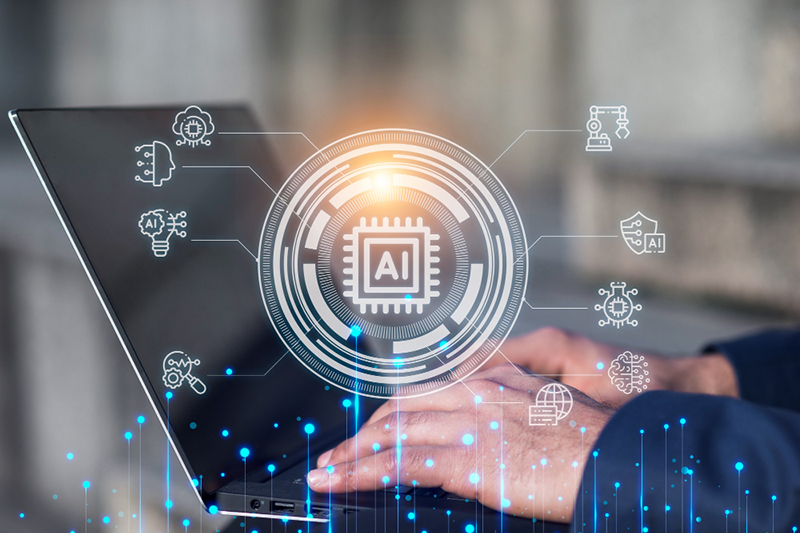How AI is Transforming Medical Coding in 2024

Dr. Sarah Johnson
Chief Medical Officer

Artificial intelligence is revolutionizing the healthcare industry, particularly in the realm of medical coding. This article explores how AI-powered solutions like Claio are reducing errors, improving efficiency, and maximizing reimbursements.
The Current State of Medical Coding
Medical coding has traditionally been a manual, labor-intensive process prone to human error. Coders must translate complex medical documentation into standardized codes for billing and reimbursement purposes. With thousands of ICD-10, CPT, and HCPCS codes to choose from, and constantly evolving guidelines, the task is daunting even for experienced professionals.
According to recent studies, manual coding processes result in error rates between 5-40%, depending on the complexity of the cases. These errors lead to claim denials, delayed payments, compliance risks, and lost revenue for healthcare providers.
How AI is Transforming Medical Coding
Artificial intelligence, particularly natural language processing (NLP) and machine learning, is changing the medical coding landscape in several significant ways:
1. Automated Code Suggestions
AI systems can analyze clinical documentation in real-time and suggest appropriate diagnosis and procedure codes. These systems learn from millions of coding examples and continuously improve their accuracy over time. Advanced platforms like Claio can achieve accuracy rates exceeding 95%, significantly reducing coding errors.
2. Enhanced Documentation Analysis
AI can identify missing or incomplete documentation that might lead to undercoding or claim denials. By flagging these issues before claims are submitted, healthcare providers can improve their documentation practices and maximize legitimate reimbursements.
3. Compliance Monitoring
Keeping up with changing coding guidelines and payer requirements is challenging. AI systems can automatically incorporate the latest updates and ensure that coding practices remain compliant, reducing the risk of audits and penalties.
4. Efficiency and Productivity
AI-assisted coding dramatically reduces the time required to process claims. What might take a human coder 15-20 minutes can be accomplished by AI in seconds, allowing coding professionals to focus on more complex cases and quality assurance.
Real-World Impact: Case Studies
Healthcare organizations implementing AI-powered coding solutions are seeing remarkable results:
Multi-Specialty Practice in Chicago
After implementing an AI coding solution, this practice experienced a 22% increase in revenue and a 40% reduction in claim denials. The system identified numerous instances of undercoding that had been occurring for years, resulting in significant revenue recovery.
Regional Hospital System
A hospital system with five facilities reduced their coding backlog by 85% within three months of implementing AI-assisted coding. Their average coding time decreased from 18 minutes to 4 minutes per case, allowing them to process claims more quickly and improve cash flow.
The Human-AI Partnership
Despite advances in AI technology, human expertise remains essential. The most effective approach is a partnership between AI and human coders:
- AI handles routine coding tasks and initial code suggestions
- Human coders review complex cases and validate AI recommendations
- The system learns from human corrections, continuously improving its accuracy
- Coding professionals evolve into coding analysts, focusing on quality assurance and optimization
Challenges and Considerations
While AI offers tremendous benefits for medical coding, organizations should consider several factors when implementing these solutions:
- Integration capabilities: The AI system should integrate seamlessly with existing EHR and practice management systems
- Training requirements: Staff will need training to effectively work with AI-assisted coding tools
- Customization options: Different specialties have unique coding requirements that the AI should accommodate
- Security and compliance: Any system handling patient data must be compliant with healthcare privacy regulations and implement robust security measures
The Future of AI in Medical Coding
As AI technology continues to evolve, we can expect even more sophisticated coding solutions in the coming years:
- Predictive analytics to identify potential coding issues before they occur
- Real-time feedback during patient encounters to improve documentation
- Advanced integration with clinical decision support systems
- Expanded capabilities for specialty-specific coding challenges
Conclusion
AI is transforming medical coding from a labor-intensive, error-prone process into a streamlined, accurate system that benefits healthcare providers and patients alike. By reducing errors, improving efficiency, and maximizing appropriate reimbursements, AI-powered coding solutions like Claio are helping healthcare organizations thrive in an increasingly complex regulatory environment.
The future of medical coding is not about replacing human coders but enhancing their capabilities through intelligent automation. Organizations that embrace this human-AI partnership will be well-positioned to optimize their revenue cycle management and focus more resources on their primary mission: providing quality patient care.
Ready to transform your medical coding process?
Discover how Claio's AI-powered coding solution can help your organization reduce errors, improve efficiency, and maximize reimbursements.
Subscribe to Our Newsletter
Stay updated with the latest insights, industry news, and coding tips delivered straight to your inbox.
We respect your privacy. Unsubscribe at any time.